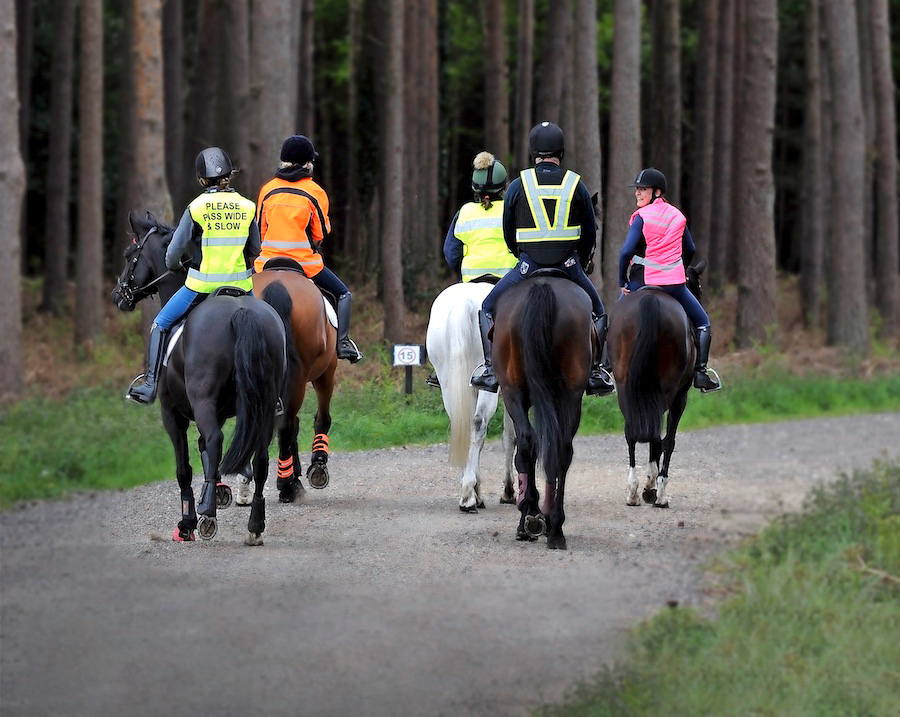1 Be seen
It’s vital to ensure you can be seen out hacking all year round. Even if you don’t ride on the roads much, the RAF look out for horses when they’re low flying, so being as visible as possible could prevent you getting a nasty scare. All it takes is to wear high-vis kit, and there are some smart designs on the market – there’s even a range endorsed by dressage superstar Charlotte Dujardin.
For added safety consider wearing a camera, which is invaluable should you need to provide evidence in the event of an accident out hacking. Hackcam produces a range of cameras, as well as a high-vis gilet to mount one on.
Your horse needs to wear high-vis too. You can buy neck strap covers and ear covers, but as one of the most visible areas of the horse to a driver is the legs, it’s wise to invest in fluorescent leg wraps.
2 Stay toasty
The easiest way to keep warm is to layer up. Merino wool baselayers, including long-sleeved T-shirts, pants and leggings, add warmth without bulk. Technical fleeces with softshell outers and fleecy linings are useful too. Add a pair of thermal jodhpurs, use thermal liners in your gloves and invest in
a fleece buff or scarf. And don’t forget winter riding socks, fur-lined boots and a sturdy winter jacket.
Re-usable hand and feet warmers, which are activated by cracking or shaking them, will stay warm for around eight hours and, once popped inside your gloves or boots feel amazing on a cold day. Alternatively, try a heated riding gilet like the Keis X10, powered by battery, which has heated panels across the chest and kidney area. www.keisapparel.co.uk
3 Be inspired by a new route
We all have our favourite hacks – the ones we ride time and again. And there’s nothing wrong with that. But just sometimes it’s exciting to wander away from the usual and try something new. Your horse will enjoy the change of scenery, and it can even help with any riding issues you might have – if your horse always canters when you don’t want him to, for instance, because ‘we always canter here’, or jogs and goes sidewards because he knows he’s on his way home. A new route will engage his brain and make him listen to you.
So how do you find new routes? One of the easiest ways is to enlist the help of the British Horse Society (BHS). Its web-based RideMaps UK service – see www.bhsaccess.org.uk/ridemaps – maps out riding routes around the country. You can search by postcode, click on a region, or hover over an icon on the map, and the route will simply pop up. It’s not an exhaustive list, but a great starting point.
Before you set off read the BHS’ advice guide (which you’ll find on the RideMaps
UK site). There are also leaflets you can download to help ensure you explore safely. Find out more at www.bhs.org.uk
Don’t miss the latest issue of Your Horse Magazine, jam-packed with training and veterinary advice, horse-care tips and the latest equestrian products available on shop shelves, on sale now.









